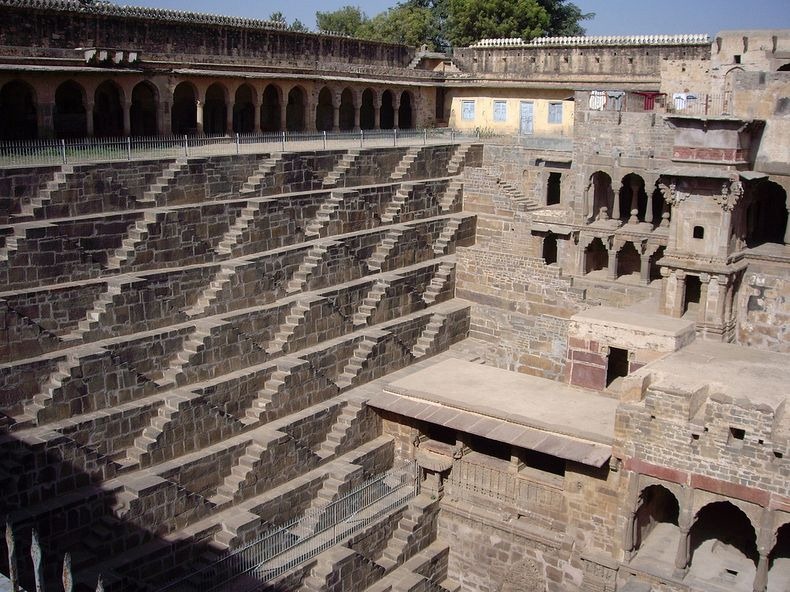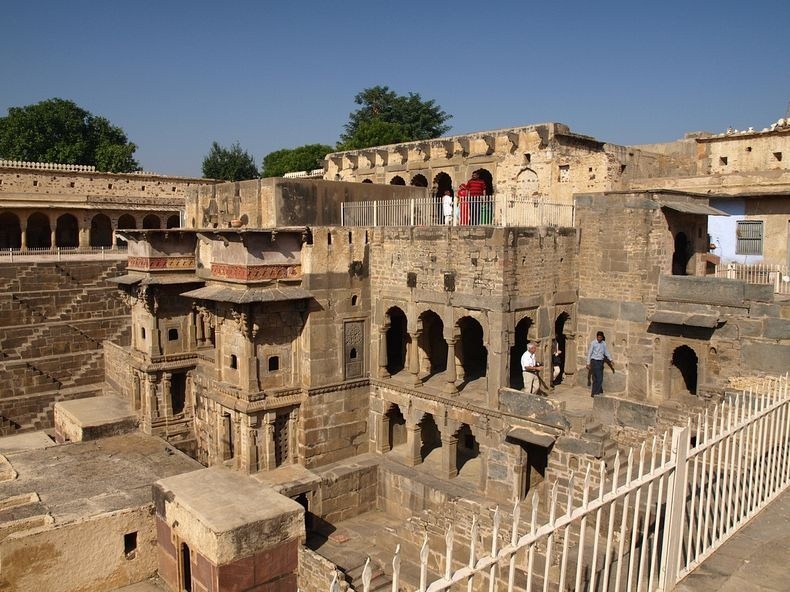Chand Baori looks like anything but a well.
Theres also a temple adjoining the well for visitors to explore.
Photo credit
Stepwells, also called bawdi or baori, are unique to India.

These wells have steps built into the sides that can be descended to reach the water at the bottom.
Stepwells are generally larger than common wells and are often of architectural significance, just like Chand Baori.
The reasons behind building such an elaborate step well is not fully clear.
Some believe it was used as a water harvesting site.
Rajasthan is a dry place, and hence, every ounce of water is precious.
In addition to conserving water, Chand baori also became a community gathering place for the Abhaneri locals.
The townsfolk used to sit around the step well and cool off during the summer days.
At the bottom the well the air is always about 5-6 degrees cooler than at the top.
The side that has the pavilions have niches with beautiful sculptures including religious carvings.
It was a ritual for pilgrims to wash their hands and feet at the well before entering the temple.
This temple was destroyed during the 10th century by Mahmud Ghazni.
Its many pillars, columns, and statues now lie scattered in the temple courtyard.
The well is now a treasure managed by the Archeological Survey of India.
Sources:Rang7,Xflo














